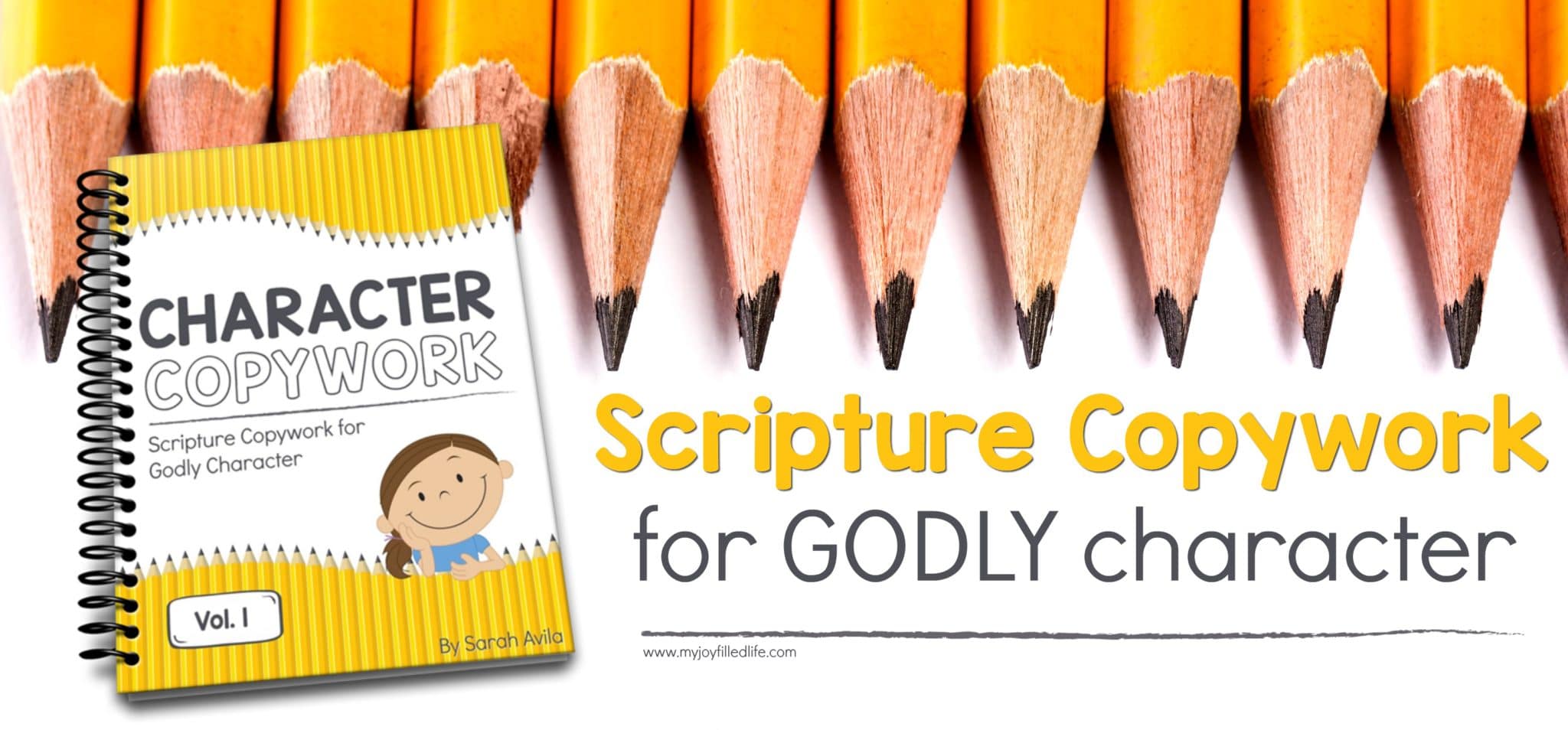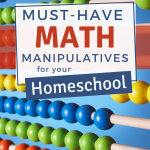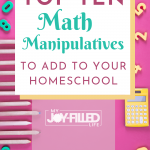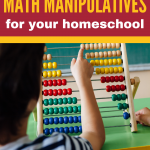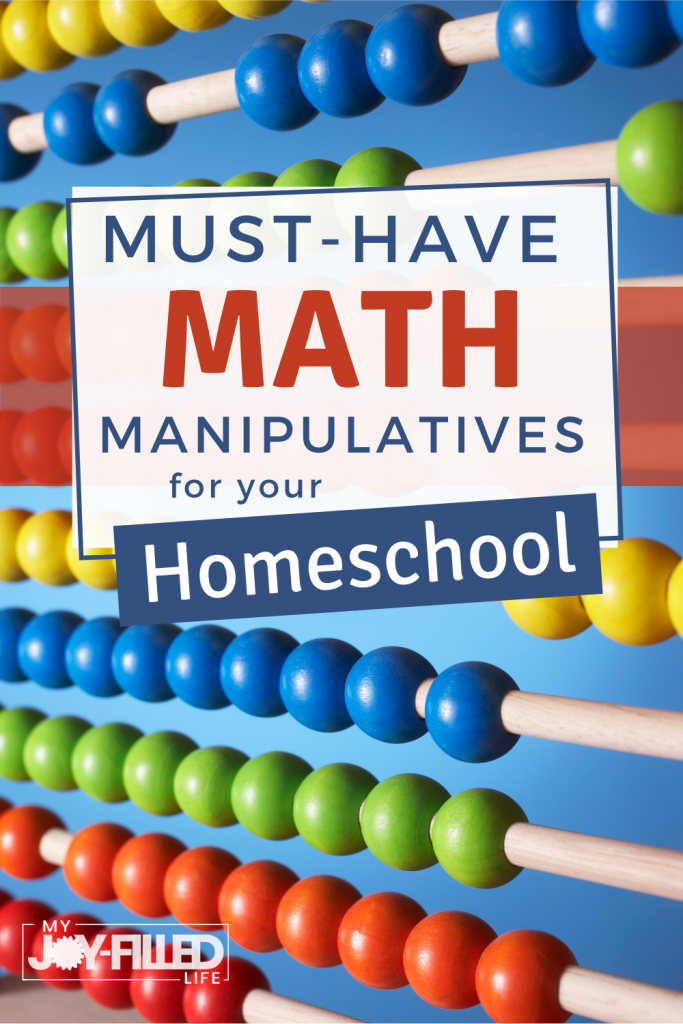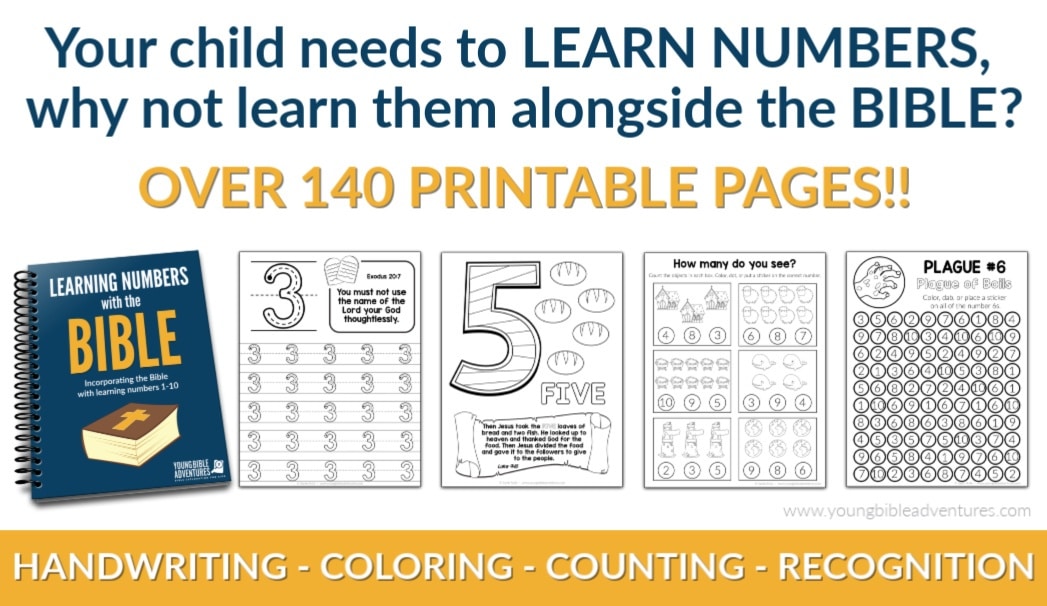Math is the subject that intimidates me most when I think about teaching it in the long term to my children. I’ve never been a numbers person and I wonder how I’ll relay the necessary information to them adequately. In order to ease some of my fears, I want to make sure that my children really master a concept before moving on to another subject. I desire to ensure that they have firm mathematical foundations so that when the difficult lessons come, they will be prepared with the tools needed to overcome any hurdles they may face. I want to take a few moments to share my top ten math manipulatives that I feel every homeschool should consider owning.
Top Ten Math Manipulatives to Add to Your Homeschool
An Abacus
Available in a variety of styles, this classic tool provides tactile practice for counting, place value, grouping, and more.
Cuisenaire Rods
These colorful sticks are more than they seem! They bring mathematical relationships to life intuitively. Use them to help introduce number concepts to children, emphasize spatial reasoning, and equivalencies.
Base Ten Blocks
Whether you are teaching whole numbers, decimals, or fractions, these cubes can be utilized to show children how to find the solution to a variety of math problems.
Counters
Sometimes a hands on approach works best for helping children get a good grasp on numbers. Having a physical representation of each digit can add a much needed layer to a lesson.
Unifix Cubes
These are extremely versatile and can be used to do all sorts of things. Add, subtract, multiply, divide, make patterns, and so much more with these interlocking blocks. Another alternative to these are snap cubes. These cubes are great for using with printable ten frame cards.
A Clock
Learning how to tell time is easier when a child can manipulate a clock to learn the minutes and how the hands work. I prefer clocks with large numbers and multi-colored hands.
Fraction Circles
Fractions are the bane of many homeschoolers’ math lessons. Make teaching about parts and wholes a little easier with these circles that break apart to show the various measurements.
Pattern Blocks
Use assorted shapes to construct simple or intricate designs and patterns. This provides practice in spatial reasoning, hand eye coordination, and also helps introduce geometric concepts.
Place Value Discs
Teach about ones, tens, hundreds, thousands, etc., with these small round discs that represent each value with specific color codes.
Hundreds Chart
Provide children with a chart that shows the numbers 1-100 to aid with counting, skip counting, graphing, playing math games, etc.
Play Money
Play money for kids helps promote financial literacy by teaching basic math skills, money management, and the concept of value through interactive play and learning.
Alternative Manipulatives
Let’s be honest: all of these manipulatives can be pricey, especially if you are on a tight budget. The great thing is that you can typically find substitutes for nearly all of them around your home for FREE or much cheaper. The following list contains everyday items that I have personally used in place of standard manipulatives.
- Dry beans
- Legos
- Beads
- Buttons
- Craft sticks
- Coins
- Small toys
- A standard wall clock
- Craft foam cut into various shapes
- Playing cards
- Rocks
- Craft gems
- Small candies (M&Ms, Skittles, etc)
- Drinking straws
- Bottle caps
Math manipulatives, whether store bought or homemade, are essential for teaching arithmetic well. They are the biggest weapon in my arsenal for cementing math lessons. They are tactile, they give a visual aid to abstract concepts, and they help give children that boost they need to build their number prowess.
What is your favorite manipulative to use in your homeschool?
*This post was submitted by Dusty from Bookworm’s Treehouse

